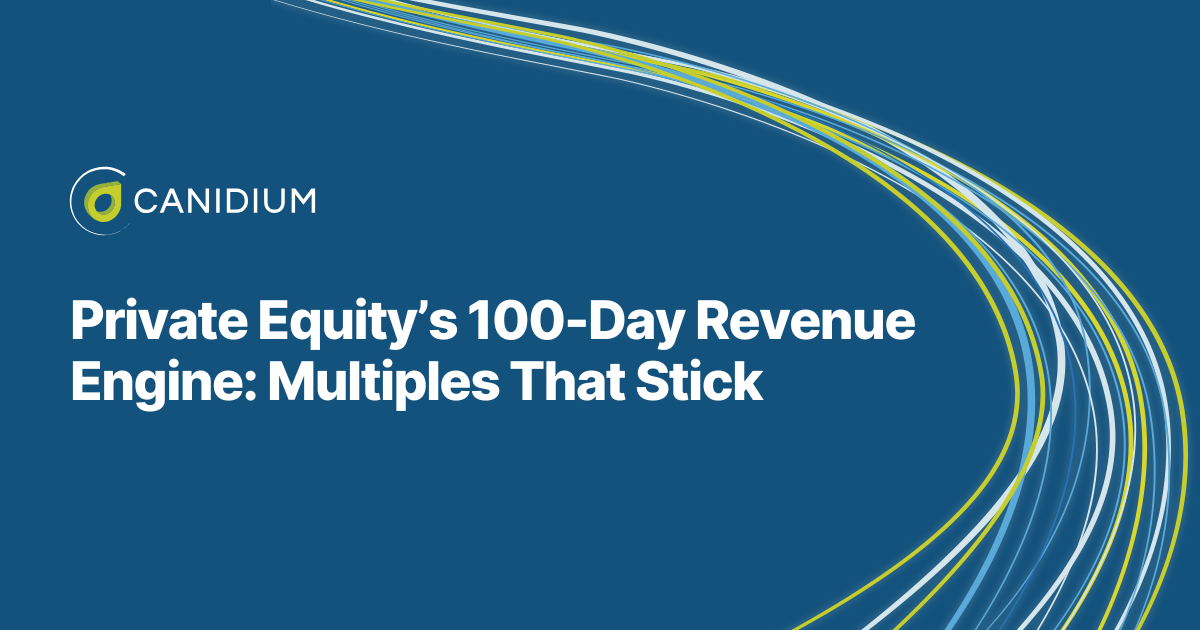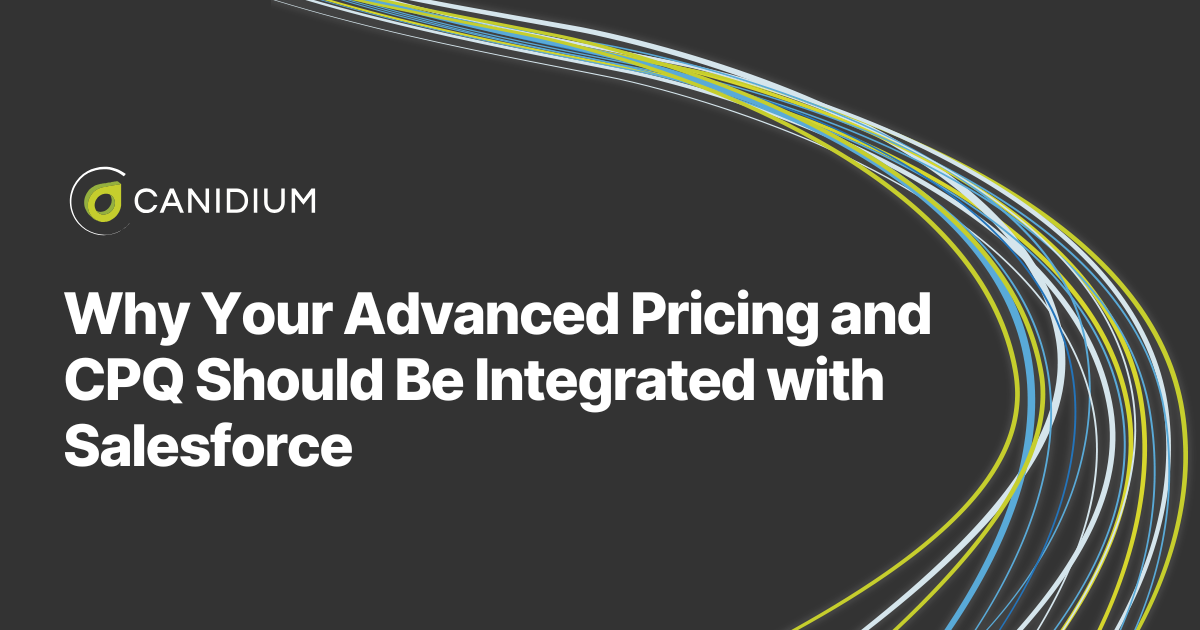Whenever economic uncertainty is unquestionably high, hesitation often follows. Tariff threats, rising vendor costs, and talk of recession have many companies tightening budgets and pressing pause on strategic investments. But for pricing teams, the pressure isn't on hold—it's intensifying.
As cost inputs shift overnight and global disruptions cascade through supply chains, pricing professionals are being asked to do more with less and faster than ever before. Yet, the very tools that could help manage this workload, protect margins, and move with agility often get stuck in approval limbo.
The High Cost of Doing Nothing to Prepare for Tariffs
In the face of overwhelming economic uncertainty, it's hard to know what to do. Executives across industries seem largely to be holding their breath, waiting to see how the rapidly shifting trade war plays out over Q2. Delaying action in favor of seeing which way the wind blows is a natural response, but it's not necessarily a good one.
With J.P. Morgan forecasting a 60% chance of recession by the end of 2025, many executive teams are pausing growth initiatives—delaying hiring, reevaluating capital projects, and freezing major spending decisions. It's understandable. Doing nothing can feel like the safest option when the future feels unclear.
But for pricing teams, this freeze comes at the worst possible moment.
Over the past several weeks, pricing professionals—especially those in distribution, manufacturing, and consumer packaged goods—have been working harder than ever. Their days are filled with tracking rapid vendor cost changes, updating pricing models, and responding to a wave of volatility sparked largely by tariff pressures. These teams aren't just busy, they're overwhelmed. Ironically, the economic uncertainty behind these challenges is also the reason leadership does not want to invest in the very tools and systems that would relieve this pressure.
It's a painful paradox: decision-makers are reluctant to invest because of the uncertainty, yet that same uncertainty is the exact reason investment is so badly needed.
This pattern isn't new. Many companies shift into a protective posture when economic uncertainty and recession loom. However, freezing it in place can cost more in the long run. The price of inaction is hidden at first, showing up in overburdened teams, missed opportunities, and pricing decisions that lag behind the market. And in industries that depend heavily on imports, where tariffs are hitting hardest, the impact can be even more acute.
Distribution: Where Speed and Scale Collide
Distributors are navigating a uniquely difficult landscape. According to the most recent figures as of May 1st, 2025, two-thirds (62%) of distributors expect their cost of goods sold to rise by 10% or more in 2025. The same survey also found that financial strain in the industry is already widespread, with 67% of respondents reporting a negative impact on their businesses and only 2.5% indicating any positive financial impact.
With vendor costs fluctuating daily and inventory flowing in from global sources, pricing accuracy can't wait. Yet many teams lack the tools to keep up in real time. Manual pricing processes, which take up to two months to get through current systems, are simply inadequate to the task at hand. Pricing departments are working beyond the limit of their workload capacity, and they still cannot meet the demands that come with a trade war. Time only widens the gap between rising costs and market-facing prices, putting margins and customer trust at risk.
Manufacturing: The Tariff Tension Point
Manufacturers are feeling the squeeze from all sides. In April, the Institute for Supply Management's purchasing manager's index for manufacturers fell to 48.7%, with anything under 50% indicating falling activity. Raw materials sourced from overseas are getting more expensive by the day, and the future of costs is anything but certain.
With complex supply chains and high-volume outputs, even small delays in pricing updates can have a major financial ripple effect. Manufacturers risk losing competitiveness and profitability in a tight-margin environment without agile pricing strategies.
CPG: Juggling Volume, Vendors, and Volatility
The consumer packaged goods (CPG) sector, valued at $2 trillion in North America, was already in a somewhat tight spot prior to the introduction of tariffs. In the first half of 2024, the top 50 CPGs by revenue globally posted only 1.2% year-over-year revenue growth. Many CPG companies had little room to spare in their margins heading into 2025. Now, the constant fluctuations in tariff policy are hitting industry players hard.
Multiple SKUs, promotions, and vendor relationships make the CPG pricing function complex under normal conditions. Now, with cost inputs in flux, pricing teams are racing to respond. Without modern tools, that race becomes a grind, and inaction at the top slows everyone down.
Quantifying The Cost of Delay
While the challenges your pricing team faces are compelling, executive leadership will hesitate to invest in anything that doesn't present a compelling financial picture in the current economy. In other words, pricing leadership needs to be able to justify the numbers. Luckily, the financial potential of pricing software is not a hard sell.
Imagine a $5 billion company with solid gross margins and steady operating expenses. Now, assume tariffs drive a modest 10% increase in the cost of goods sold. If it takes two months to reflect those cost increases in customer pricing, as is typical for traditional, manual-based pricing changes, that delay costs the business $67 million in unrecovered costs.
In this scenario, every one-month delay costs $33 million.
Now, compare that with the impact of a pricing solution that enables near-instant price adjustments. You are able to respond to market fluctuations within a few days, if not just a few hours, thereby maintaining optimal pricing regardless of the shifting tides. At the same time, your pricing team is free to focus on higher-order tasks like long-term strategic planning instead of wasting months of time reacting to constant changes.
Shaving even a few weeks off the update cycle can have a massive effect on profitability, especially in tariff-heavy industries like manufacturing, distribution, and CPG. Yet, the other side of this equation that executive leadership will want to know about is the costs of a pricing solution implementation.

While every case is different, pricing software generally offers notably high returns. Use this guide to estimate your Pricefx solution implementation ROI to get a feel for your organization's costs and returns.
How Pricing Leaders Can Build a Convincing Business Case For Solution Investments
At the moment, making the case for a pricing solution is as critical as it is difficult. As economic uncertainty and tariff fluctuations continue to ripple across industries, pricing teams are under intense pressure to respond quickly to cost changes, manage margins, and maintain profitability. Yet in many organizations, leadership is hesitant to invest because of these very same economic concerns, opting to pause or delay projects in an effort to ride out the storm.
This is where pricing leaders face a pivotal challenge. It's up to pricing VPs and directors to articulate the urgency of the moment and demonstrate that inaction carries real financial risk. To this end, a well-crafted business case can cut through the hesitation, connect the dots for executive decision-makers, and secure the support your team needs to adapt and thrive.
Let's go over how to effectively build a business case for pricing software.
Start with the Pain
The strongest business cases are targeted. Don't try to solve every problem at once. Instead, hone in on a few high-impact pain points. Pinpoint the most pressing pricing challenges this project would solve, be it skyrocketing input costs, the inability to update prices quickly, or the mounting pressure on your team just to keep up. These are tangible, urgent issues that resonate.
One key area to spotlight is margin leakage. If your organization isn't able to keep up with cost increases and implement corresponding price adjustments fast enough, that gap is where profits start to slip. This isn't theoretical—it's measurable, and it's happening right now for many pricing teams, especially in sectors hit hardest by global uncertainty.
Quantify the Pressure
While it may feel abstract to talk about team morale or burnout, the pressure on pricing teams is real—and it's costly. According to the American Journal of Preventative Medicine, companies spend between $4,000-$21,000 annually on lost productivity and turnover as a result of burnout. Overwhelmed teams make slower decisions, miss opportunities, and struggle to be strategic. If your team is working long hours just to stay afloat, that's a signal that your pricing operations are under stress and something needs to change.
Highlighting the operational cost of doing nothing can be just as compelling as projecting the gains of a new solution. So, when building your business case, tally up both the margin losses and the added overhead costs this software gap is causing your company.
Focus on What Will Help Now
When building your case, anchor it in the near-term impact. A pricing solution doesn't have to be massive or all-encompassing. Instead, propose a fast, focused deployment—one that targets immediate ROI by streamlining pricing updates and improving margin responsiveness.
Leaders want to know: What's going to move the needle this year? Your answer should be clear: this investment isn't just for long-term transformation. It's for immediate, measurable impact, in as little as the next six to twelve months.
How to Prepare for Tariffs: The Experts' Best Practices and Next Steps
Tariffs and rising import costs are creating real challenges for pricing teams; but while many companies freeze in the face of uncertainty, the reality is that waiting too long to address these issues can be far more costly than making a move now.
There's no doubt that the idea of taking on a software implementation while your pricing team is already so thoroughly overwhelmed can be daunting. However, experienced implementation teams can ensure minimal disruption during the project, quick returns post go-live, and target improvements to your team's performance.
That's why Canidium takes a proactive, flexible approach to helping companies prepare for what's ahead.
Make Progress Without Overloading Your Teams
One of the most common concerns we hear is, "Our team is already too busy to take on a pricing project." We get it. Pricing leaders are buried in cost updates. IT is juggling competing initiatives. And cross-functional teams are often stretched thin.
In these cases, Canidium's pricing team uses a waterfall-style project delivery model—one that allows us to work with people as they're available, not all at once. We'll collaborate with your pricing lead and product owner first, then engage IT and other teams in sequence, so no single department is overloaded. Moreover, we can begin gathering requirements and working through data readiness well before the official start of the project. That way, when it's go-time, you're already several steps ahead.
Start with a Few Key Pain Points
For pricing leaders looking to build project momentum, the best strategy is to narrow your focus. Similar to the process of building your business case, you can start your project with a handful of the most pressing issues, like increasing list prices to match vendor cost hikes, identifying areas of potential margin leakage, or reducing time-to-price-change.
These pain points not only resonate with executives, but they also deliver immediate, measurable results. By focusing on what will move the needle fastest, you get quick returns and your team gets relief from their most pressing issues.
Get Ahead of the Data Hurdles
Another major barrier to pricing transformation? Data readiness. We often see projects stall—not because of software limitations, but because the foundational data isn't in place.
Canidium works with IT teams upfront to identify what data you'll need, where it lives, and how to get it project-ready. This early collaboration gives you time to resolve roadblocks before the real work begins. It also makes your implementation more efficient, more focused, and ultimately more successful.
Flexibility That Respects Your Reality
The truth is, you don't need to have everything perfectly lined up to get started. We'll meet you where you are—whether you're in firefighting mode or actively planning your next steps. Our goal is to move forward without disrupting the day-to-day work your teams are already handling.
The Most Important Tool in a Tariff Economy
Even in times of chaos—especially when the future feels uncertain—investing in your pricing capabilities is one of the smartest, most protective moves you can make. It's a practical way to defend against rising costs, insulate your margins, and give your teams the tools they need to respond quickly and confidently.
When so many factors feel out of your control, your pricing strategy doesn't have to be one of them. If you only move forward with one initiative this year, let it be this. Your bottom line will thank you.
Reach out to our pricing solution implementation experts for a free consultation.







